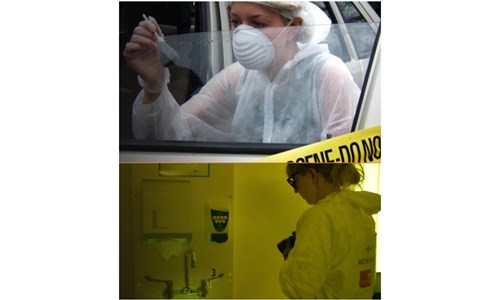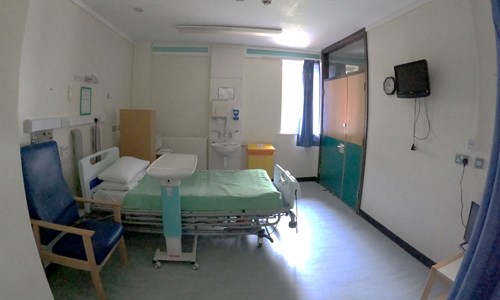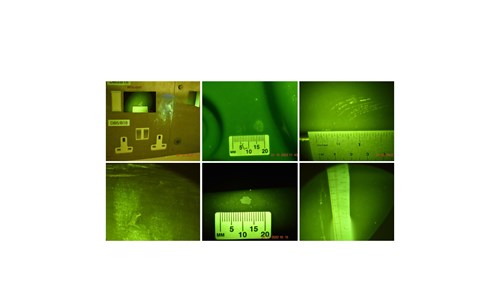
Sign in to access your HIS profile below.
Dr Sarah Fieldhouse is an Associate Professor of Forensic Science at the School of Justice, Security and Sustainability at Staffordshire University. She was awarded a HIS Small Research Grant in November 2022 to investigate how forensic methods can be applied for infection prevention and control (IPC) purposes. This project examined the use of alternate light sources for the detection of evidentially-relevant material in healthcare settings. The project finished in June 2023.
In this blog we spoke with Sarah to discuss her findings and how being awarded a HIS Small Research Grant accelerated her research.
Filtered light analysis is an established method used in forensic science to detect substances by exploiting the response of the substance to light. A variety of substances fluoresce under certain wavelengths of light, which enables the detection of material that is otherwise latent - this is known as fluorescence examination.
Fluorescence examination is routinely used to detect trace materials such as explosives, ink, and body fluids in forensic investigations. Body fluids are known to contain and transmit infection, but they are typically invisible. This research project tested this technique as a tool for infection monitoring, by alerting the user to otherwise latent infectious sources in situ and across a wider surface area than routine environmental monitoring, which may only cover a proportionally smaller area of a room or item.
The research team examined surfaces and items within three single bed patient rooms and adjacent toilets of Chirk Community Hospital with a light source that has very similar properties to those used by forensic investigators.

A significant proportion of the surfaces found within these examination rooms were suitable for this kind of analysis - this is encouraging, since it suggests that it could have applications in alterative areas of a hospital. The light source detected hundreds of fluorescent marks and substances.
To investigate the value of the technique, it was compared against one of the health board’s current environmental monitoring processes, called ATP testing (Adenosine Triphosphate). ATP is an energy-carrying molecule that is found in the cells of living things, which present opportunities for infectious agents to thrive (referred to as bioburden). Its presence as bioburden is used as one measure of cleanliness in many industries, including healthcare.
To conduct an ATP test, a cotton swab is rubbed over an approximately 10 cm2 area and the swab is inserted into a device that calculates the quantity of ATP present within a few seconds. Given the practicalities and costs associated with the technique, only a small area of a room is typically swabbed, and as substances are often invisible, it is a speculative approach, and the data may or may not represent the ‘environment’ as a whole.

The data showed large differences in ATP content from substances that fluoresced compared to areas that did not fluoresce. This indicates that the substances detected may have presented opportunities for infective agents to grow or to be transferred, which is known to contribute to infection spread. The light source also detected lots of substances that did not contain much ATP. The team have started to establish a method that could determine what these substances are, using robust chemical analysis used in many industries, including forensic science.
There were substances in the room and on the tested items that did not fluoresce and were therefore not detected by the light source. These non-fluorescent areas were also ATP tested and some had readings which suggested that bioburden was present - this means that the technique is not infallible. Further work in this area on a wider range of items and in different hospitals or healthcare settings could make a significant contribution to IPC processes. This technique has the potential to reduce the amount of bioburden that staff and patients are exposed to, and therefore reduce the opportunity for infectious agents to spread.
Overall, this preliminary study was highly successful and positive feedback was received from the IPC and Facilities Management (FM) team, who are continuing to work together in this area. The methods that were used in this HIS Small Research Project have provided a useful foundation for future research in this area.

As a researcher based in forensic science, I had not anticipated having an opportunity to research in a healthcare setting. HIS funding has provided a valuable opportunity for multidisciplinary knowledge exchange between an academic institution and an NHS health board to pilot translational research in a fundamental discipline. Not only has this funding provided recognition of the value of the work, but it has initiated a far wider project with other NHS hospitals. It has strengthened a partnership between Staffordshire University and the Betsi Cadwaladr University Health Board, which simply has given me an opportunity to have a career in this field.
The research was adopted into the Health and Care Wales portfolio, based on its consideration as a ‘high quality research project’. This was a tremendous accolade, particularly since the trial was novel.
The project has provided a unique opportunity for me to work as part of a team with healthcare practitioners and to build a network of experts to direct the project and further work. Working with the IPC and FM teams as part of the grant application process has educated me about the operational constraints, pressures, and practicalities of researching within and bringing technology or changes of practice into the NHS.
I have also learned about the Integrated Research Application System and the process for other procedural applications to work in NHS hospitals. Although I encountered some minor challenges with completing the ethics documentation, the support staff were exceptionally efficient and supportive, which is encouraging for future applications.
Yes, and would like to apply for HIS funding.
In my experience, the open-minded approach that the HIS have taken to assess and support this work has initiated research that could have genuine operational value. The application process was very straightforward, the outcome was timely, and HIS staff were friendly, knowledgeable, and supportive throughout the project.